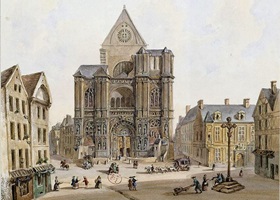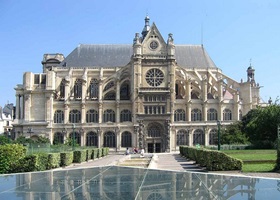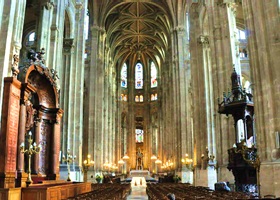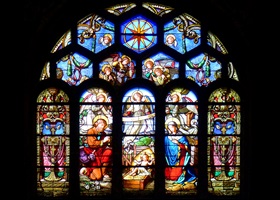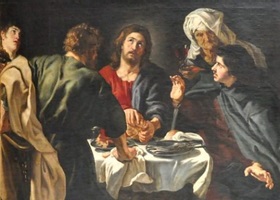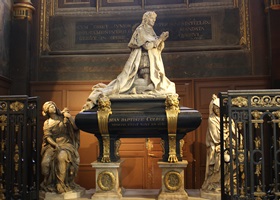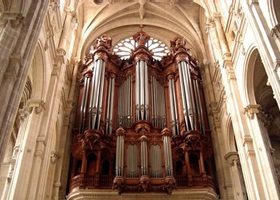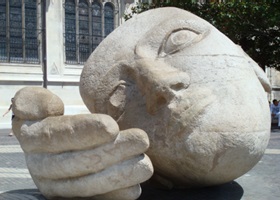Église Saint-Eustache
The story of the Saint-Eustache church began in 1213, when a modest chapel was built in the middle of Paris, on the path that goes from the Île de la Cité to the Montmartre hill.
The Saint-Denis abbey gave the relics of Saint Eustache, a Roman martyr.
In 1532, the first stone of the Église Saint-Eustache as we know it was set under François I (1494-1547).
Although nobody knows who the first architect was and the works lasted for more than a century, the style of the church is remarkably coherent.
It was built on plans largely inspired by Notre-Dame de Paris’, with flying buttresses and ribbed vaults.
In 1637, Jean-François de Gondi, archbishop of Paris, church finally consecrated the church. He was impressed with its height and the variety of the interior decoration.
In 1655, Colbert (whose tumb is in the church), Louis XIV’s ministers and general controller of finances – the king was a parishioner at Saint-Eustache – had two chapels built under the towers of the façade.
These modifications compromised the solidity of the building, and the façade and first bay of the nave and aisles.
In 1754, the duke of Chartres, future Philippe-Egalité, set the first stone of the portal which still exists, on plans by Jean-Hardouin Mansart de Jouy (son of Louis XIV’s First architect).
Pierre-Louis Moreau started the constructions of the northern tower and the second order of the main portal– also known for the Palais-Royal’s restored façade, on rue Saint-Honoré, whereas the southern tower remains unfinished, still nowadays.
In 1793, during the revolution, the church was emptied out and became a temple of agriculture.
The church reopened in 1795; the parishioners got back some items (such as Colbert’s tumb) and beneficiated from the submissions and orders from the state and Paris, such as the Pilgrims of Emmaus, a painting that certainly came from Rubens’ workshop.
In the 19th century, reparation and restoration works started.
Between 1846 and 1854, Victor Baltard designed a complete restoration of the building. He drew the organ buffet, the pulpit, the main altar, and supervised the entire painting renovation.
Following the political events of 1870-1871, with the fall of Napoléon III’s empire and the proclamation of the IIIrd republic, the attic, the buttresses and the southern façade were restored.
Between 1928 and 1929, the church’s façade was revised and solidified.
During the 1990’s, a Dutch house restored the organ after many difficulties. Saint-Eustache now has one of the most imposing instruments in France.
The building, now property of the city of Paris, has undergone many inner and outer renovation works.
Information: audition of the great organ every Sunday at 5.30pm.
The outer sculpture (“Listening”, see picture above) was made in 1986 by French sculptor Henri de Miller.
Open everyday:
Monday – Friday: 9.30am -7pm,
Saurdayt: 10am – 7pm,
Sunday: 9am -7pm.
Rate: free entrance.
How to get there: 2 impasse Saint-Eustache, 75001 Paris.
Métro line 4 Station "Les Halles".
RER A, B and D Station "Châtelet - Les Halles".
Bus lines: 21, 27, 38, 85, 96 and "Balabus".








